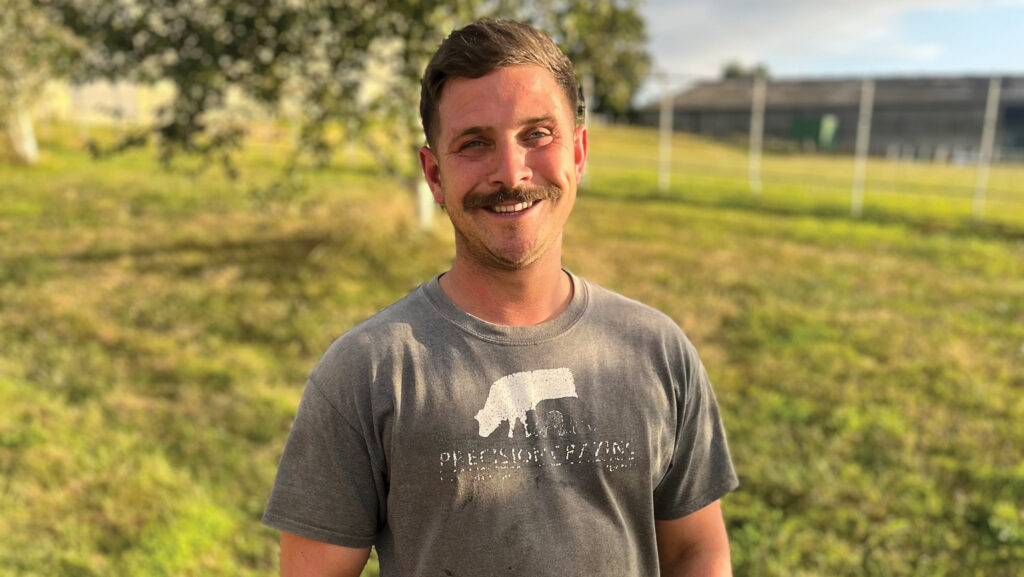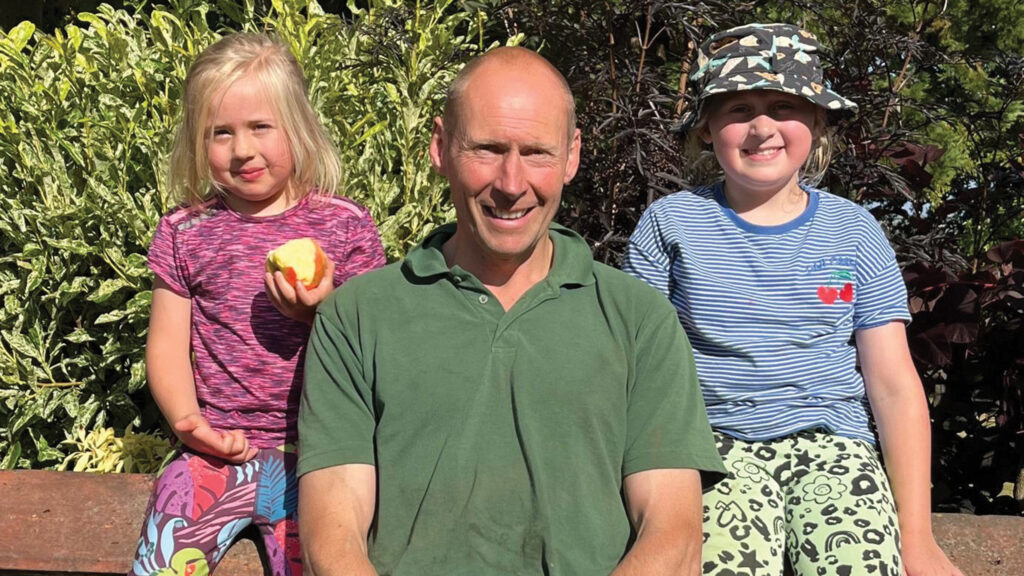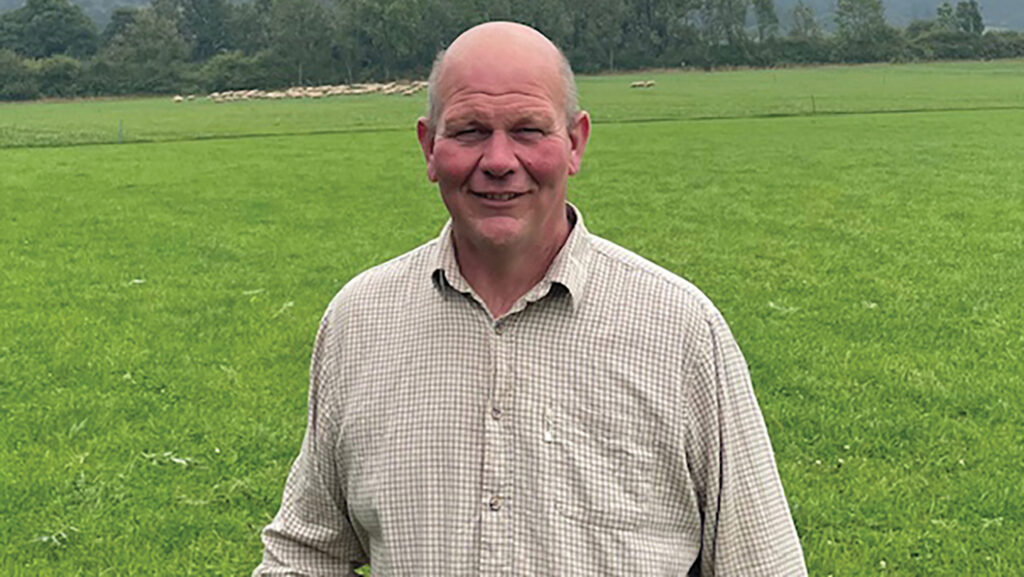How 3 farmers are building resilience into their businesses
 © Adobe Stock
© Adobe Stock A strong desire to drive their farms forward and challenge their thinking led Josh Gay, Jonathan Hall and Richard Pattison to attend a three-day workshop for beef and sheep farmers last December.
Part of AHDB’s Roots to Resilience programme, the course was led by Dallas Mount of US-based Ranch Management Consultants, which teaches ranching for profit.
See also: Workshops to help improve tough farm business conversations
Since the workshop, these three farmers have used what they learned to plan and implement changes at home to make their businesses more profitable and manageable.
Here, they explain what they have set in motion.
Josh Gay, Newton Farm, Somerset

Josh Gay © Charly Stanton
A switch to outdoor lambing and a move to spring calving are among the changes introduced by Josh Gay. He recently took over the running of Newton Farm near Bath from his father, Hugh.
Although still very much involved, Hugh is happy to step back after around 40 years in the driving seat, says Josh, who counts himself lucky that succession is not an issue.
Even with a successful farm shop and café, which takes at least half the lamb and beef (as well as pork and eggs) produced on farm, the 567ha (1,400-acre) business on mainly tenanted land struggles with overheads and debt.
Heavy clays and largely north-facing slopes add further challenges to technical performance.
Josh signed up for the Roots to Resilience course to see if the ideas rolling around in his head to improve the business would stand up to the scrutiny of fellow farmers.
Confidence
He found the process of sharing financial and farm data in small groups for critical analysis “quite weird, but invaluable” and says it gave him confidence to make decisions.
Having since carried out a detailed financial analysis of each enterprise, he has made several changes.
The sheep flock of 300 ewes and ewe lambs will move to 100% outdoor lambing to lower costs, and the number of store lambs bought in over winter will double to 500-600.
The pedigree split-block calving South Devon suckler herd will transition to spring calving only, dropping from about 130 cows to 90.
And more maize is being grown as a break crop in the arable rotation – up from 10ha (25 acres) to 35ha (86 acres) – to finish dairy beef cattle on contract.
In addition, pig feed cost is down from £400/t to £250/t by milling home-grown feed, while a reduction in pig mortality rates through better use of vaccines has lowered labour input.
In addition, a more realistic price for pigs sold through the farm shop has increased income.
“I’m trying to simplify the business as I’m really struggling to remember everything. If it’s simpler, we can use less labour, fewer resources and manage the pasture better,” Josh explains.
A further action has been to increase family meetings with Josh’s three siblings, his parents and a mediator, from twice yearly to quarterly.
Jonathan Hall, Kilton Hall Farm, North Yorkshire

Jonathan Hall with daughters Matilda and Evelyn © Nicola Hall
Improving farm safety and quality of life are among the priorities for Jonathan Hall, who farms near Saltburn-by-the-Sea in partnership with his parents, Richard and Susan.
At 78 years old, Richard is still very active on the farm. Jonathan’s wife, Nicola, is a GP and they have two young children.
Cereals grown on the 243ha (600-acre) tenanted farm provide grain and straw for intensive finishing about 200 crossbred bulls a year.
Bulls produced from a small suckler herd of 35 Stabilisers are also finished indoors, with heifers sold or kept as replacements. The sucklers graze herbal leys in a Countryside Stewardship agreement.
“I learned a huge amount [on the course],” says Jonathan. “I think the best farmers are those who are making farming work for them, not worrying about what their neighbours are going to think.
Family first
“The [predominant] culture in this country is farming first, but it should be family first.
“Nicola and I talk about what’s our ‘best life’, and she’s happy with me working hard on the farm and is bearing the brunt of looking after the family – but that’s only OK if the farm is super-efficient.”
The course, he says, confirmed that it is possible to make more money doing less work. Progress on this front is challenging because he and his parents are working through their different ideas about their future roles on the farm.
However, Jonathan has made some changes. Long-term cover is now in place if injury prevents him from working.
Investment (with grant funding) in a new cattle crush will improve safety and efficiency.
And removing the emotion from decision making and, instead, using hard financial facts is enabling him to question more: for example, he is looking at the opportunity cost of the grass used by the suckler cows, given cow depreciation.
“By embracing lean management and benefits in time management and labour efficiency, I can now take my girls swimming or biking on a Sunday morning,” he says.
Richard Pattison, F & RG Pattison, North Yorkshire

© Richard Pattison
Partial budgeting and improved communication have given Richard Pattison confidence to make changes.
He runs 130 pedigree South Devon suckler cows and 800 Lleyn ewes on 223ha (550 acres) grass, contract-farmed for Jack Bell of Ingelby Farms.
He also runs a bed-and-breakfast pig enterprise on the home farm in Brompton. His wife, Lynn, works full time for Cargill as a raw materials trader, and they have three teenage children.
Richard was apprehensive about being among “standout” people in the beef and sheep industry at the Roots to Resilience course, but says he found farmers at all levels, each with their unique circumstances and set of problems.
“I got loads from talking to others on the course and that gave me the confidence to keep going and look at the bigger picture.
Dallas said you can’t keep going blindly, but have to look at what is – and isn’t – making money – and what you enjoy – and don’t enjoy – doing.”
Partial budget
Richard has since carried out partial budgets for each enterprise.
This process has shown the potential for increasing sheep numbers, reaffirmed the value of rotational grazing, and highlighted the need to get away from buying in feed, to improve profitability.
Further investment in permanent and temporary fencing is planned, pending a Farming in Protected Landscapes grant. And deferred grazing has been introduced to shorten the winter housed period and cut costs.
Spending less time bedding stock and carting muck will also reduce tractor work, which Richard finds boring. He is also looking at a change of enterprise on the home farm to one he will enjoy more.
New SAM3 herbal leys in the arable rotation on his contract farm are enabling Richard to increase sheep numbers – an opportunity that arose through making a concerted effort to improve communication and work on a mission statement together.
“Jack’s very approachable and open to conversations, but I hadn’t thought about a mission statement before; I was probably carrying on regardless,” admits Richard.
To book on to upcoming Roots to Resilience events, including Discuss the UndiscussabullTM in October and the four-day workshop in November, visit ahdb.org.uk/roots-to-resilience
